Blood Trailing Elk After the Shot: The Hunt May Not be Over Yet!
Blood trailing a mortally wounded elk can create both anxiety and excitement. A concern about possibly never finding the animal hounds you until you see that still brown lump on the ground, or the sticks that suddenly reveal themselves to be antlers. If a good shot is made and a good effort is put into blood trailing, anxiety turns to exhilaration and is followed by elated celebration and gratitude.
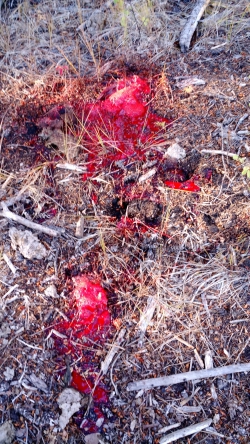
The lung area is the most responsible rifle or arrow target on an elk, period. (A quartering to or away shot, as long as it involves the lung, is still a good shot with a rifle.)
A lung-shot blood trail will be pinker and may be frothy. It is the rule, rather than the exception, that an elk or deer will run a short ways after being lung shot. They will often run briefly even when shot through the heart. Heart shot blood will be dark red.
Recent Articles
-
Elk Nut (Paul Medel) Elk Communication Products Now Available
“Elk Nut”, Paul Medel, has studied elk sounds for over 30 years. His products will help you have more “close encounters of the herd kind”. Available with free shipping on this site.
Related topics available:
Moving a Whole Elk
Game Hauler Review
Field Dressing Elk
Gutless Field Dressing
Skinning Elk
Quartering Elk in the Field
Deboning Elk in the Field
Cooling Big Game in the Field
Game Meat Processing: Bill's True Story
Elk Hunting With Horses
Getting Elk Meat Home Easier
I have tracked mortally wounded elk through snow with no blood in the snow until they dropped dead a couple of hundred yards away. No blood does not mean no hit!
Be prepared to track your animal after the shot. Don’t be disheartened if it immediately runs out of sight, as if it is in perfect health. It happens all the time. Always assume you have hit the animal! Don’t take the chance of wasting such a fine animal and all the work it took to get the shot. It might be just over the hill, piled up. But it might go a half mile and then die. Do the right thing and spend the time to be sure.
When I shot the elk to the right I lost track of it amongst the rest of the herd. The whole herd disappeared out of sight behind some trees. I waited a full half hour before quietly stalking up to where I had seen it last. There was no blood, only tracks from the whole herd.
I might have followed the herd's tracks if I had not seen trees shaking in a thick jack pine stand. Although, I might have picked up on the lone tracks into the brush. I waited until there was no more movement and stalked to where the trees had been moving.
If the downed elk had not shaken the little trees, I would have had to scour the thick areas around there to find it, probably after I had followed the elk herd a while. It wouldn't have been the first time that happened.
If Your Animal Goes Down
If you see your animal go down, give it time to die right where it is. Wait to make sure it’s dead. It’s very possible to walk up on an animal that looks dead and have it bolt when you walk up. The rule of thumb is to wait at least 30 minutes after shooting a deer or elk before approaching it, even if it looks “for sure” dead.
There are plenty of important things you need to do beforehand anyway. Celebrate for a few minutes, without taking a chance of spooking an animal that might still be capable of renewed life.
Let time work for you. Use your binoculars to look for breathing. If it isn’t moving or holding its head up, prepare yourself and your gear. Get something to eat and drink. You’re going to need the nourishment. I usually take some time right then and there to thank God for the blessing.
If no movement has occurred for at least thirty minutes and you’re pretty sure it’s dead, approach with gun loaded or arrow nocked and ready. As you get closer, use your optics to continue to check for chest movement, indicating breathing. When you reach the elk, touch an eyeball with the barrel of your gun or bow limb. Or, just tap it on the eye with your boot.
If it Goes Down, But is Still Alive
If the animal is lying there looking around, be patient. Don’t alert it to your presence. A wounded animal would prefer to just lie there, relaxed. Let it. Let time take its toll. Hopefully, it will be bleeding to death (internally or externally).
The good eatin' cow elk in the photo was arrowed at 55 yards, using my 60 yard pin. It was five yards closer than I thought. The arrow hit high and to the left a bit. She was standing quite still, so the shot was not as risky as it would have been. The arrow went through the top of the lungs.
Since she was left undisturbed, she moved a few feet and bedded. After 45 minutes she died just a few feet from where she was hit. This elk would have been able to run, if impatience had taken over the shooter. A lot of movement, or even a second shot may have been all it took to send her fleeing before she bled to death.
If it’s standing there, or if it stands up, take another shot if a good one is open to you. As a general rule of thumb, if it’s still standing keep shooting as long as you have a clear target, especially with a rifle. With an arrow, if you think the first shot is going to anchor the animal, sit tight and don't alarm it with a second shot, unless you have a very clear sure shot placement opportunity.
Gut or Leg Wounded Animals
If you think you might have a gut shot animal, be even more patient. Blood trailing will be different. It will be tempting to do something to find this animal. Find something else to do. Take a nap, eat lunch, read a book... Just wait!
The blood trail will often involve spots of smeared blood as a part of the gut is dragged over logs, sticks or the ground. Give it at least four hours before starting to track the elk (two hours for a deer). Gut shot animals will die. They will also run, if pursued too soon.
In 2005 I shot a bull with a bow and made a high gut shot. There was no blood trail. I tracked him through damp grass. Then, from a distance, I watched him lying there looking around for three hours. I refused the temptation to move close enough for another shot.
I decided to walk back to my truck and prepared for the haul. When I went back six hours after the shot, he was dead where I had left him.
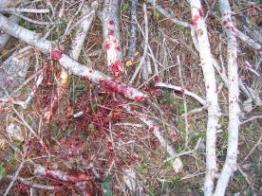
Be very slow and careful in tracking an elk that is shot in a leg. The blood from a muscle wound will be bright red. If you will let that animal just lie down, the leg will probably get stiff. However, it might get up and move on its own after awhile, if a bone isn’t broken. Muscle wounded elk are often not retrieved by the hunter, unless a bone is busted.
The photo above of a great blood trail that diminished into a few very hard to find single drops of blood, then nothing. The young hunter had experienced help trying to track "his" elk, but the trail went completely cold. No more blood. The elk appeared to have been strong enough to just keep going.
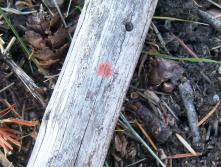
To avoid a blood trail that dries up and disappears, make only sure, careful shots after precise sighting in and repeated rifle practice at distances that you might be willing to shoot. (You might change your mind in practice!)
Expensive premium ammo like Federal Premium or Hornady Light Magnum or Heavy Magnum (my personal choices), and others give you the best opportunity to make your shot a fatal one, even if the aim goes wrong. Elk can and do heal from some muscle wounds, especially if the bullet was not high powered enough to do maximum damage. Massive damage provides good blood trailing and a quicker death.
Very sharp fixed blade broadheads will have a good effect as well, causing massive bleeding and better blood trailing. Most are very sharp right out of the package, but can soon dull once they are in the quiver. Replace or sharpen them to “shaving sharp” often.
We are still not willing to use mechanical broadheads on elk. The jury is still out for us, even for the newest generation that promise to open unfailingly.
I once followed someone else's abandoned blood trail high up into horribly dense dead fall. Blood tracking was easy at first, but later became nothing but drops of clear serum in the snow, then nothing. I noticed that the elk was dragging one hoof at first, but eventually started to put more and more weight on that wounded leg until it was walking normally. The shooter had no way of knowing that, because he did not follow up his shot.
If it Runs and Disappears
If the elk (or other big game animal) disappears from sight, stand there for a moment and rehearse what just happened in your mind. Don’t be discouraged. Many people assume they missed as they watch their intended target disappear as though unhurt into the forest, or over a rise. They are usually wrong! Don’t jump to conclusions.
In order to watch the fleeing animal as long as possible after the shot, step to the side or move slightly ahead, only as much as necessary. Then, just stand where you are and process everything. Mark the time or start a stop watch. Give it at least a half hour before pursuing it.
Use your binoculars to study the exit area. If you have a witness, motion them to come to you. Compare what you saw. Before you move any more, mark the following spots firmly in your mind and then with bright flagging strips:
• the spot where you shot from
• the spot where the animal was standing when you shot it
• the path it followed afterward and
• where you last saw it before it disappeared behind the landscape
Approaching the “Last Seen” Spot
Don’t rush to check that “last seen” spot until you’re sure the animal is nowhere near. It’s hard to see a lying down animal in tall grass or undergrowth. It could be closer than you think.
After you’ve marked the three key points above, remain patient. Mark crucial spots on your GPS unit, if you have one. Watch the clock. Don’t rush. You’ve still got plenty to do.
Slowly and carefully study the ground, grass or shrubs along the route the elk took from where it was hit, to where it disappeared. Be careful not to approach where it could be down until plenty of time has gone by.
Look for any hair, blood or tracks. If there are clear tracks, note the condition of the tracks themselves. Notice how sharp the edges are, what color the upturned dirt is, or the overturned snow, compared to that around it. Try to memorize the size, shape and appearance of the tracks. They might mix in later with other tracks. You might have to distinguish which is your animal’s hoof print. That can get frustrating.
After the elk slows done a little, the tracks will not tear up the ground as much. That’s a good sign that your animal has slowed down, but you might begin to wonder if it is another elk’s track. Note the freshness in comparison with what you’ve seen so far.
Moving Forward
After the crucial wait time has past, begin moving slowly along the trail past the point of last sighting. Study it carefully. Get down low to the ground and look for clues. Sometimes you might only find tiny drops of blood, one at a time. It’s not uncommon to see lots of blood quite a few yards away from the point it was hit, only to have the blood trail dwindle to nearly nothing.
Again, don’t be discouraged. The exterior wounds sometimes get plugged up and blood just builds up inside. The tiny drops are from the blood that is still dripping off the hide of the animal. This does not mean the elk is not bleeding internally.
Look along the stems of tall blades of grass and other off the ground flora for smears of blood that wipe on them directly from the animal's body.
Scan Ahead, Study the Ground
If someone is with you, have them walk off of the trail and use optics to look ahead for the elk while you are looking for blood and tracks (or vice-verse, depending on your skills). You might find blood in several spots along the trail, and then maybe none for a while.
Look for tracks, disheveled earth, snow or vegetation. Look ahead occasionally and the path of least resistance might be somewhat obvious.
Often times the animal will lie down and then get back up, upon seeing or hearing the hunter coming. If you find a point where the elk lied down and bled, but got up and moved, stop and give it another 30 minutes or so. Is it a gut shot? If it could be, let it alone for several hours.
Mark sign as you go along with bright flagging strips. (Please remove those later!) Look back often and the travel direction might become clearer from the general direction of your flagging. Hopefully you will not have to look long, but keep it up until you find the animal, or are absolutely sure you have no other choice but to give up.
Blood Trailing After Dark
If night falls, it might seem best to come back in the morning, but time and temperature could destroy your meat.
Here is a true story about a friend of mine who lost all of his meat because of several poor decisions. Click here to read the true story.
The best flashlight to have for night trailing is one of those made for blood trailing. It definitely makes blood trails jump out at you. Primos makes one called the " BloodHunter
Blood trailing at night is sometimes necessary, but not all that fun. Waiting until morning will assure your sign will look old and may disappear if it snows, rains or blows. Your meat may not stay cool enough. Keep this in mind if you hunt late in the afternoon.
Once you pull the trigger or release the arrow you have the responsibility to do the blood trailing diligently and thoroughly, no matter how difficult or time consuming it becomes. Don’t take the shot unless you’re prepared to do whatever is necessary to get your meat safely in the freezer. We owe that to these fine animals.
To read thorough instructions for field dressing an elk click here. Even if you've done it many times, you might find a good idea or two that we have gleaned from several experienced hunters.
Please subscribe to or our Quick Elk Hunting Tips and Updates newsletter or to an RSS feed (see left column for both) to be alerted whenever new information is added to the site.
We'd appreciate it if you would "Like" us on Facebook, or share this site with others.
Back to Elk Down! page, from Blood Trailing page.
Shop Our Store
Newsletter Opt-in:
"I just get so excited talking about elk.." ~Tristan, CO
Search This Site Here:
Hunting Gear Reviews
ASAT CamoElkNut Outdoor Prod.
Bugling Bull Game Calls
HECS Stealthscreen
Montana Decoy
StringSling Bow Sling
Skull Hookers
Safari Sling Rifle Sling
Clip-Shot Mini Camera Mount
ASAT Camo
Bugling Bull
Game Calls
ElkNut Productions
Free Shipping on
ElkNut Products Here
HECS Stealthscreen:
A New Type of Concealment!
$199.99,
Including U.S. Shipping
Montana Decoy Elk/Deer
Available Here!
The StringSling:
Best Bow Sling Design!
$29.95, Including U.S. Shipping
Clip-Shot: 1 oz. Camera Mount
Skull Hookers
$34.99 & 59.99 Free U.S. Shipping!
The Safari Sling:
Best Rifle Sling Design!
Share your elk hunting pictures and stories on our
Facebook Page!
Forum Topic Discussions:
How often should I use my cow call?, I am new to the sport of bow hunting elk and my question is how often should I use my cow calls?
295 yard kill with a Kimber Montana 325 WSM, by Don from Dallas: My ELk did not even twitch once. He was dead when he hit the ground.
325 WSM is worth considering, Palmer Lake,CO: I believe that the .325 WSM is the ultimate elk caliber...
30-30 for Elk? : I have a 30 30 with 170 grain round nose bullet. Will this work to shoot an elk ?
(More comments about Best Elk Rifle below)
Submissions
Unique Elk Talk by Idaho Steve (Hailey, Id ), In the middle of the night, a herd of elk came traveling through the drainage and right past my tent...
Smelly Elk Areas? by Jimmy (New Mexico), I've come across many areas that just stink of elk, literally. I have heard two somewhat contradictory stories...
DIY Gear List Must Have's! by Craig (Florida) "Here are some of the items I use on my DIY hunts in the CO backcountry..."
Elk and Deer Hunting and Mountain Bikes, by Skip Shepherd (Tucson, AZ)~ At 67 I am thinking a lot about investing in a mountain bike to get back into remote areas...
Solo archery hunting -- tips for calling/set up?, by Idaho Steve (Hailey, ID )~ I hunt by myself a lot...I'd love to hear your thoughts on strategic set-ups when solo hunting and calling.
Non- Lead Bullets for Elk?, by Dave, Elk Hunting Tips.Net (Garrison, MT)~ What do you ballistics guys think about the use of non-lead bullets for elk? According to this story...
Rage Broadheads by Chris, ...my buddy gave me a rage practice tip and when I shot it you could not pick out the broadhead from the field points. I was sold...
Recent Submissions:
Finally filled the freezer..., Colorado Rockies~ "I was bummed when I got to the property and no elk, nor any hoof prints in the snow. ...I pulled each of the elk into shade then started gutting..."
Wounded Veteran Elk hunts, by Joshua FL), I am a disabled veteran of Operation Iraqi Freedom and have always dreamed of hunting elk. I am posting this to see if anyone would know of any elk hunts free to disabled vets....
First Elk with a Bow, by Ryan H. (Colorado), ...Finally after many years of hunting with a bow "I got er did"!
First Elk!, by Tater (Sheridan, Arkansas) I took the advice I received from this website and was successful…I wanted to Thank You and Your Forum and the folks that share on here for the knowledge and information that helped me find an elk I was quite happy with.
Any success in Unit 14?, by: Dave (MI), "I'm planning on doing a DIY in Unit 14 for 2012..."
Bugle in Herd bulls, by Swiltbank (Az) The key to calling in a herd bull is to get into his bedding grounds and threaten his herd. Start off sounding like…
Best Rifle Caliber?, by Buglemup (Superior, MT), "I've been reading what people have been writing about rifle calibers and here is what 16 years of guiding elk has taught me."
7mm Remington Magnum, by Dean (Helena, MT. USA) I use my Liberty Ruger M77, 7mm Rem. Mag. for antelope, deer, elk... Comment: "What do you guys think about the idea of hunting elk with a 270? I also know a guy who kills elk with a 243."
338 Marlin Express, "Light, fast shooting, hard hitting, manageable recoil, and for a lever gun - very accurate."
Guns I like for Elk, by Mountain Walker (Kootenays east B.C. Canada),"I think the gun you shoot Elk with should be one you shoot a lot with... "
.35 Remington, by Bill Smith "...my .35 Rem appears to have dropped a medium deer flawlessly, but I now have serious doubts as to its capability to take an elk."
Where to hunt in Az unit 3B?, by Cliffjumper (Tucson, Az) ~ I got a late bull muzzle loader hunt in Arizona unit 3b. Does anyone know how to hunt bulls in the late season?...
First time elk hunter hunting Arizona unit 6A , by Rob Marchio (Omaha, Ne)~ I'm a first time elk hunter hunting Arizona's unit 6A. I'm planning on staying in the Pine Grove campground...
Help needed for 1st DIY Hunt w/Son, by Patrick (Parker, CO), "I was looking for some advice on my 1st DIY hunt for 2014 in CO with my 13 yr old son. I have countless hrs going over stats, topo maps & Google Earth"
Elk Hunting Colorado in 2013, By William (Midland, TX) "I am planning an elk hunt next year in Colorado and I wanted to know if hunting Gunnison National Forest..."
Unit 60 Elk 4th Rifle Season Nov 13-17 Either Sex 2013, By Chester "...Any general advice about the unit would be appreciated!"
Elk Hunting Idaho Unit 8 8A 11, This is my first year seriously trying to track down some elk. Is there anyone that has hunted in any of these units and can give me some friendly advice? Mitchell, Moscow Idaho
Elk Hunting Pocatello by Cameron (Pocatello) Where is the best place to elk hunt around Pocatello, Idaho? I'm a student at ISU and I'm looking for somewhere around here to hunt next season.
How is the elk hunting in unit 30A in Idaho?, by Terry (Richland Center, WI) Has anyone archery elk hunted in unit 30A in Idaho? What can you tell me about the area?
Hunting in Western Montana, by Mike A. (Alabama)
I did not draw a tag for Missouri breaks where I have hunted in the past. Having to start over and try western Montana.
New Mexico Unit 49, by Silas (Los Alamos, NM)
If anyone has tips on areas to start scouting, I'd really appreciate it.
First Elk Hunt First Elk Hunt, by Big "R" (NM)
I finally got drawn for a late elk hunt in Unit 28, north of Road 506 and south of the boundary line of the Lincoln National Forest...
Cow elk in Nevada's unit 222:
"Any good places known in unit 222?"
Northeast Nevada Early Elk hunt, by John (Carson City,NV)
"Any suggestions on what areas I may see some signs of elk?"
Retired USMC MSgt Needs Advice, by Ken Wing USMCRET (Bealeton, Va)
Popcorn VenisonPopcorn Venison with Maple Syrup?
Elk or Venison Steaks Grilled to Perfection Here's how to turn them into steakhouse steaks!
Spice-Crusted Grilled Venison Roast Recipe This Spice-Crusted, Grilled Venison Roast recipe works great for any red meat roasts, including elk, deer or beef roast...
Corned Elk Recipe You can easily make corned venison and elk, moose or corned beef from these instructions...
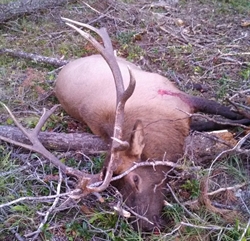
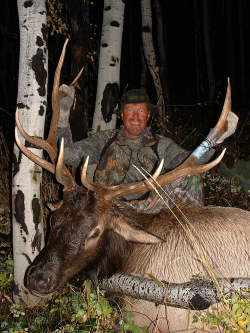
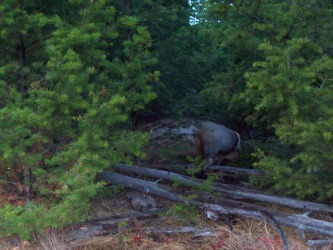
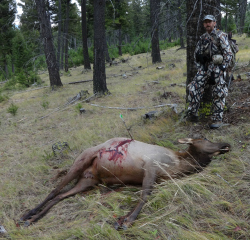
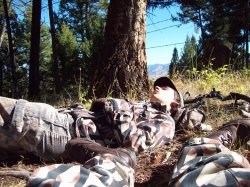
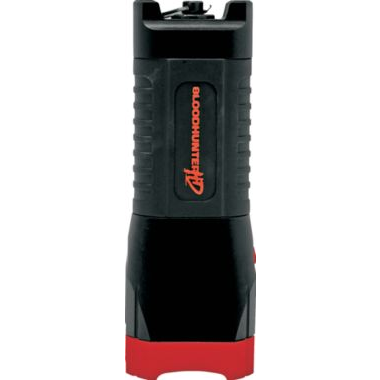






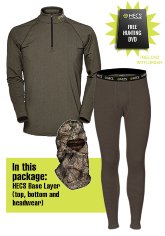
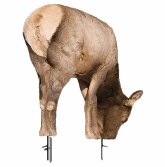
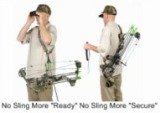
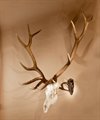
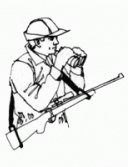
New! Comments
Leave a comment in the box below.